- Home
- Orhan Pamuk
Istanbul Page 5
Istanbul Read online
Page 5
In the 1950s, the bus route from Taksim Square to Emirgân still passed through Nişantaşı. When we went by bus to the Bosphorus with my mother, we would board it just outside our house. If we went by tram, the last stop was Bebek, and after a long walk along the shore, we would meet up with the boatman, who was always waiting for us in the same place at the same time, and climb into his caïque. As we slipped among the rowboats, pleasure craft, and city-bound ferries, the mussel-encrusted barges and the lighthouses, leaving the still waters of Bebek Bay to meet the currents of the Bosphorus, rocking in the wake of passing ships, I would pray that these outings might last forever.
To be traveling through the middle of a city as great, historic, and forlorn as Istanbul, and yet to feel the freedom of the open sea—that is the thrill of a trip along the Bosphorus. Pushed along by its strong currents, invigorated by the sea air that bears no trace of the dirt, smoke, and noise of the crowded city that surrounds it, the traveler begins to feel that, in spite of everything, this is still a place in which he can enjoy solitude and find freedom. This waterway that passes through the center of the city is not to be confused with the canals of Amsterdam or Venice or the rivers that divide Paris and Rome in two: Strong currents run through the Bosphorus, its surface is always ruffled by wind and waves, and its waters are deep and dark. If you have the current behind you, if you are following the itinerary of a city ferry, you will see apartment buildings and yalis, old ladies watching you from balconies as they sip their tea, the pergolas of coffeehouses perched by landings, children in their underwear entering the sea just where the sewers empty into it and sunning themselves on the concrete, men fishing from the banks, people lazing on their yachts, schoolchildren emptying out of school and walking along the shore, travelers gazing through bus windows out to the sea while stuck in traffic, cats sitting on wharfs waiting for fishermen, trees you hadn’t realized were so tall, hidden villas and walled gardens you didn’t even know existed, narrow alleyways rising up into the hills, tall apartment buildings looming in the background, and slowly, in the distance, Istanbul in all its confusion—its mosques, poor quarters, bridges, minarets, towers, gardens, and ever-multiplying high-rises. To travel along the Bosphorus, be it in a ferry, a motor launch, or a rowboat, is to see the city house by house, neighborhood by neighborhood, and also from afar as a silhouette, an ever-mutating mirage.
What I enjoyed most about our family excursions to the Bosphorus was to see the traces everywhere of a sumptuous culture that had been influenced by the West without having lost its originality or vitality. To stand before the magnificent iron gates of a grand yali bereft of its paint, to notice the sturdiness of another yali’s moss-covered walls, to admire the shutters and fine woodwork of a third even more sumptuous yali and to contemplate the judas trees on the hills rising high above it, to pass gardens heavily shaded by evergreens and centuries-old plane trees—even for a child, it was to know that a great civilization had stood here, and, from what they told me, people very much like us had once upon a time led a life extravagantly different from our own—leaving us who followed them feeling the poorer, weaker, and more provincial.
From the middle of the nineteenth century, as a string of military defeats was eroding the empire, the Old City was swamped by immigrants, and even the grandest imperial buildings began to show marks of poverty and ruin, it became fashionable for the pashas and dignitaries of the modern western-influenced bureaucracy to take refuge in the mansions they had built along the Bosphorus, where they set about creating a new culture that shut out the world. Western travelers could not penetrate this closed society; there were no paved roads. Even after ferries arrived in the mid-nineteenth century, the Bosphorus did not become part of the city proper—and the Ottomans ensconced in their Bosphorus mansions chose not to write about their lives, so we must rely on memoirs of their sons and grandsons.
The brightest of these memoirists is Abdülhak Şinasi Hisar (1887–1963), whose Bosphorus Civilization is studded with long sentences of a Proustian sensibility. Hisar, who grew up in a Rumeli Hisar yali, spent part of his youth in Paris and was friends with the poet Yahya Kemal (1884–1958), with whom he studied political science; in Bosphorus Moonscapes and Bosphorus Yalis he tried to re-create the mysterious allure of his vanishing culture “by weaving and working it with all the care and attention of an old-time miniaturist.”
He wrote of their daytime rituals and their nighttime idylls, when they would gather in caïques to gaze at the silver moonlight playing on the water and savor the music wafting across the sea from a distant rowboat. I cannot pick up his Bosphorus Moonscapes without a distinct sorrow at never having had the chance to witness its passions and its silences at first hand, and I enjoy seeing how this writer’s intense nostalgia almost blinds him to the dark and evil undercurrents of his lost paradise. On moonlit nights, when the rowboats gathered in a still patch of sea and the musicians fell silent, even A. Ş. Hisar felt them: “When there is not a breath of wind, the waters sometimes shudder as if from inside and take on the finish of washed silk.”
On the rowboat with my mother, it seemed to me that the colors of the Bosphorus hills were not reflections of an external light. The judas and plane trees, the wings of the gulls that would flap so rapidly past us, and the half-broken walls of the boathouses—all of them glowed with a dim light that seemed to come from within. Even on the hottest days, when poor children jump from the shore road into the sea, the sun here is not in total command of the landscape. On summer evenings, when the reddening sky merges with the dark mysteries of the Bosphorus, the water foams, dragging madly after the rowboats cutting through it. But right beside the foam there is a smoother part of sea whose colors do not change so much as undulate, like Monet’s pool of water lilies.
In the mid-sixties, while studying at Robert Academy, I spent a great deal of time standing in the aisle of the crowded Besiktaş–Sariyer bus, looking over to the hills on the Asian shore and watching as the Bosphorus, glimmering like a mysterious sea, changed color with the sunrise. On misty spring evenings, when not a leaf in the city is rustling, on windless, noiseless summer nights, when a man walking alone after midnight along the Bosphorus shore can hear only the sound of his own footsteps, a moment will arrive, as he is walking around Akıntı Burnu, the point just beyond Arnavutköy or as he reaches the lighthouse at the foot of the Aşıyan Cemetery, when he hears the happy roar of the current and notices with apprehension the gleaming white foam that seems to have come from nowhere, and he cannot help but wonder, as A. Ş. Hisar once did and as I too have done, whether the Bosphorus has a soul.
To see the cypress trees, the dark woods in the valleys, the empty and neglected yalis, and the old weathered ships with their rusty hues and mysterious cargoes, to see—as only those who have spent their lives on these shores can—the poetry of the Bosphorus ships and yalis, to discard historical grievances and enjoy it as fully as a child, to long to know more about this world, to understand it—this is the awkward surrender to uncertainty that a fifty-year-old writer has come to know as pleasure. Whenever I find myself talking of the beauty and the poetry of the Bosphorus and Istanbul’s dark streets, a voice inside me warns against exaggeration, a tendency perhaps motivated by a wish not to acknowledge the lack of beauty in my own life. If I see my city as beautiful and bewitching, then my life must be so too. A good many writers of earlier generations fell into this habit when writing about Istanbul: Even as they extol the city’s beauty, entrancing me with their stories, I am reminded they no longer live in the place they describe, preferring the modern comforts of western cities. From these predecessors I learned that the right to heap immoderate lyrical praise on Istanbul’s beauties belongs only to those who no longer live there, and not without some guilt: for the writer who talks of the city’s ruins and melancholy is never unaware of the ghostly light that shines down on his life. To be caught up in the beauties of the city and the Bosphorus is to be reminded of the difference between one’s own
wretched life and the happy triumphs of the past.
The boat trips with my mother always ended in the same way. After we’d been caught once or twice by its dangerous currents and rocked a few times by the wakes of passing ships, the boatman would drop us at the foot of the Aşiyan road, just before the Rumeli Hisar point, where the currents come right up to the shore. My mother would then walk us around the point, the narrowest stretch of the strait, and my brother and I would play for a while by the cannons that Mehmet the Conqueror used in his siege of the city, now displayed just outside the castle walls. Looking inside these huge old cylinders, where drunks and homeless people spent the night—they were filled with feces and broken glass, crushed tin cans, and cigarette butts—we could not help but feel that our “magnificent heritage” was, at least for those who lived here now, beyond comprehension.
When we reached the Rumeli Hisar ferry station, my mother would point out a cobblestone road and a stretch of pavement now occupied by a small coffeehouse. “There used to be a wooden yali here,” she’d say. “When I was a little girl, your grandfather used to bring us here for the summer.” This summerhouse, which I imagined as old, derelict, and spooky, is always associated in my mind with the first story I heard about it: The owner, a pasha’s daughter who lived on the ground floor, had been murdered by thieves under mysterious circumstances around the time my mother spent her summers here in the mid-thirties. Seeing how struck I was by this dark tale, my mother would direct my attention to the ruins of the vanished villa’s boathouse and switch to another story; with a sad smile she would recount the time our grandfather was so displeased with our grandmother’s okra stew that in a fit of temper he threw the pot out the window into the deep fast-running waters of the Bosphorus.
There was another yali in Istinye, just overlooking the boatyard, where a distant relation lived and where my mother would go during her estrangements from my father; but as I remember, it too later became derelict. In my childhood, these Bosphorus villas held no allure for the nouveau riche and the slowly growing bourgeoisie. The old mansions provided little protection against the north wind and the cold of winter; perched as they were on the edge of the water, they were difficult and expensive to heat. Because the rich of the republican era were not as powerful as the Ottoman pashas, and because they felt more western sitting in their apartments in the neighborhoods surrounding Taksim, viewing the Bosphorus from a distance, the old Ottoman families now weakened and brought low—the pashas’ children who had fallen into poverty, the relatives of people like A. Ş. Hisar—could find no takers for their old Bosphorus yalis. And so throughout my childhood and right up to the seventies, as the city expanded, most of the yalıs and mansions were either tied up in inheritance disputes between the pashas’ grandchildren and the crazy women from the sultan’s harem who lived in them or they were divided up and rented out as apartments or even single rooms; the paint would flake off, cold and humidity would blacken the wood, or parties unknown would, perhaps in the hope of building a modern apartment, burn them to the ground.
By the late 1950s, a Sunday wasn’t a Sunday without my father or my uncle taking us out for a morning excursion to the Bosphorus in our 1952 Dodge. The vestiges of the vanishing Ottoman culture, however mournful, did not cripple us; we belonged, after all, to the nouveau riche of the republican era, so the last traces of A. Ş. Hisar’s “Bosphorus civilization” were in fact a reassurance. We were consoled, and even proud, to see a great civilization extended. We would always go to the Çınaraltı Café in Emirgan for “paper helva” and walk along the shore, either near Emirgan or Bebek, to watch the passing ships; somewhere along the road my mother would stop the car and buy a flowerpot or two large bluefish.
As I grew older, these outings with my parents and my brother began to bore and depress me. The little family quarrels, the rivalry with my older brother that turned every game into a fight, the discontents of a “nuclear family” wandering around in a car, hoping for a brief escape from the prison of their apartment—all this came to poison my love for the Bosphorus, though I could not bring myself to stay behind at home. In later years, when I would see other noisy, unhappy, quarrelsome families in other cars on the Bosphorus road, out on the same Sunday excursions, what impressed me most was not the commonalities in our lives but the fact that, for many Istanbul families, the Bosphorus was their only solace.
Slowly they disappeared: the yalis that were burned down one by one, the old fish traps my father used to point out to me, the fruit sellers who used to go from yali to yali in their caïques, the beaches along the Bosphorus where my mother would take us to swim, the pleasure of swimming in the Bosphorus. The ferry stations that had stood abandoned turned into fancy restaurants; the fishermen who would pull their boats up next to the ferry stations are gone. It is no longer possible to hire their boats for little tours. But for me, one thing remains the same: the place the Bosphorus holds in our collective heart. As in my childhood, we still see it as the font of our good health, the cure of our ills, the infinite source of goodness and goodwill that sustains the city and all those who dwell in it.
Life can’t be all that bad, I’d think from time to time. Whatever happens, I can always take a walk along the Bosphorus.
CHAPTER SEVEN
Melling’s Bosphorus Landscapes
Of all the western artists who painted the Bosphorus, it’s Melling I find the most nuanced and convincing. His book Voyage pittoresque de Constantinople et des rives du Bosphore—even the title is poetry to me—was published in 1819; in 1969 my uncle Şevket Rado, a poet and publisher, brought out a half-sized facsimile edition, and because my heart was then ablaze with a passion for painting, he gave us a copy as a present. I would spend hours studying every corner of those paintings, finding in them what I thought to be Ottoman Istanbul in all its unspoiled glory. I derived this sweet illusion not from the gouaches, whose attention to detail is worthy of an architect or a mathematician, but from the engravings that were later made from them. At times when I was most desperate to believe in a glorious past—and those of us overly impressed by western art and literature do often succumb to this sort of Istanbul chauvinism—I found Melling’s engravings consoling. But even as I allow myself to be transported, I am aware that part of what makes Melling’s paintings so beautiful is the sad knowledge that what they depict no longer exists. Perhaps I look at these paintings precisely because they make me sad.
Born in 1763, Antoine-Ignace Melling was a true European: a German of French and Italian ancestry. After studying under his father, a sculptor in the palace of Grand Duke Karl Friedrich in Karslruhe, he went to Strasbourg to study painting, architecture, and mathematics with his uncle. At the age of nineteen, he set out for Istanbul, perhaps inspired by the Romantic Movement, which was slowly gathering momentum in Europe. He could hardly have guessed that he would remain in the city for eighteen years.
In the beginning, Melling worked as a tutor in the Pera vineyards, where a cosmopolitan society was growing up in the neighborhoods surrounding the embassies, and where we can see the first seeds of today’s Beyoğlu. When Hatice Sultan, the sister of Selim III, was visiting the gardens of the Büyükdere home of Baron de Hubsch, the former Danish ambassador, she expressed her wish for a similar garden and he recommended young Melling.
The first thing Melling did for Hatice Sultan was to design a western-style maze garden with acacias and lilacs. Later he built a small ornate köşk for her palace in Defterdarburnu (on the European shore of the Bosphorus between two towns now known as Kuruçeşme and Ortaköy). This colonnaded neoclassical building no longer exists, so we know it only from Melling’s own paintings; it did not just express a Bosphorus identity but set the standard for what the novelist Ahmet Hamdi Tanpınar (1901–1962) would later call a “hybrid style”: a new Ottoman architecture that successfully combined motifs of western and traditional origin.
Melling then oversaw the construction and decoration of extensions to Beşiktaş Palace, Selim
III’s summer dwelling, using the same airy neoclassical style that suited the Bosphorus climate so well. At the same time, he was working for Hatice Sultan as what we would today call an interior designer. He would buy flowerpots for her, oversee the sewing of pearls onto embroidered napkins, give Sunday tours of the palace to ambassadors’ wives, and supervise the making of her mosquito nets.
We know all this from the letters the two exchanged. In these letters Melling and Hatice conducted a small intellectual experiment: One hundred and thirty years before Atatürk launched the Alphabet Revolution of 1928, they wrote Turkish using Latin characters. The Istanbul of their day was not given to memoir and novel writing, but thanks to these letters we can get a rough sense of how a sultan’s daughter might speak:
Master Melling, what day is the mosquito net coming? Please, tell me it’s tomorrow.… Tell them to get to work at once. Let me see you soon.… A very strange engraving … the Istanbul picture is in transit, it didn’t fade.… I don’t like the chair, I don’t want it. I want gilded chairs.… I don’t want much silk, but use lots of silk thread.… I’ve looked at the picture for the silver chest, but I do hope you’re not having it made like that, please use the old picture, and please, don’t spoil it.… I’ll give you the pearls and the stamp money on Martedi [Tuesday].
It is clear from these letters that Hatice Sultan had mastered not just the Latin alphabet but some Italian too. When she began her correspondence with Melling, she was not yet thirty years old. Her husband, Seyyid Ahmed Pasha, was the governor of Erzurum and so rarely in Istanbul. After news of Napoleon’s Egyptian campaign reached the city, there was a great deal of anti-French sentiment in palace circles; it was around the same time that Melling married a Genoese girl, and as we can see from his plaintive letters to Hatice Sultan, he now fell mysteriously out of favor:

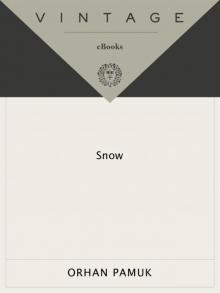 Snow
Snow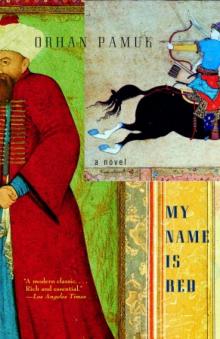 My Name is Red
My Name is Red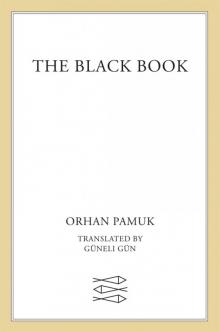 The Black Book
The Black Book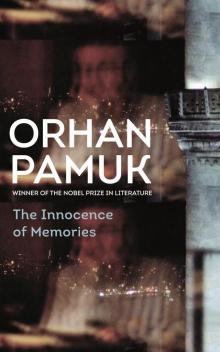 The Innocence of Memories
The Innocence of Memories The White Castle
The White Castle Other Colors
Other Colors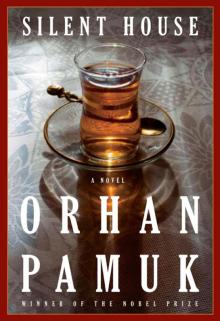 Silent House
Silent House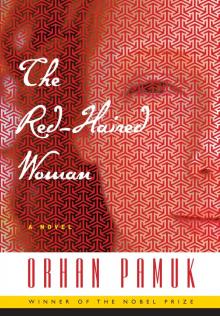 The Red-Haired Woman
The Red-Haired Woman The Museum of Innocence
The Museum of Innocence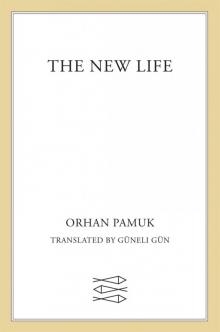 The New Life
The New Life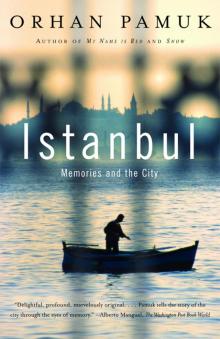 Istanbul
Istanbul